Don’t miss out on Nepal: Heart of the Himalayas (Part I) here.
In our last blog we traveled to the famed Durbar Square in Kathmandu. In the second installment on the incredible nation of Nepal, we visit two more of the UNESCO world heritage sites that are packed into the small country.
SWAYAMBHUNATH
The best spot for a bird’s eye view of the city is Swayambhunath. A holy site resting atop a ridge in northwest Kathmandu, the complex requires a climb, but the vista at the top is worth it.
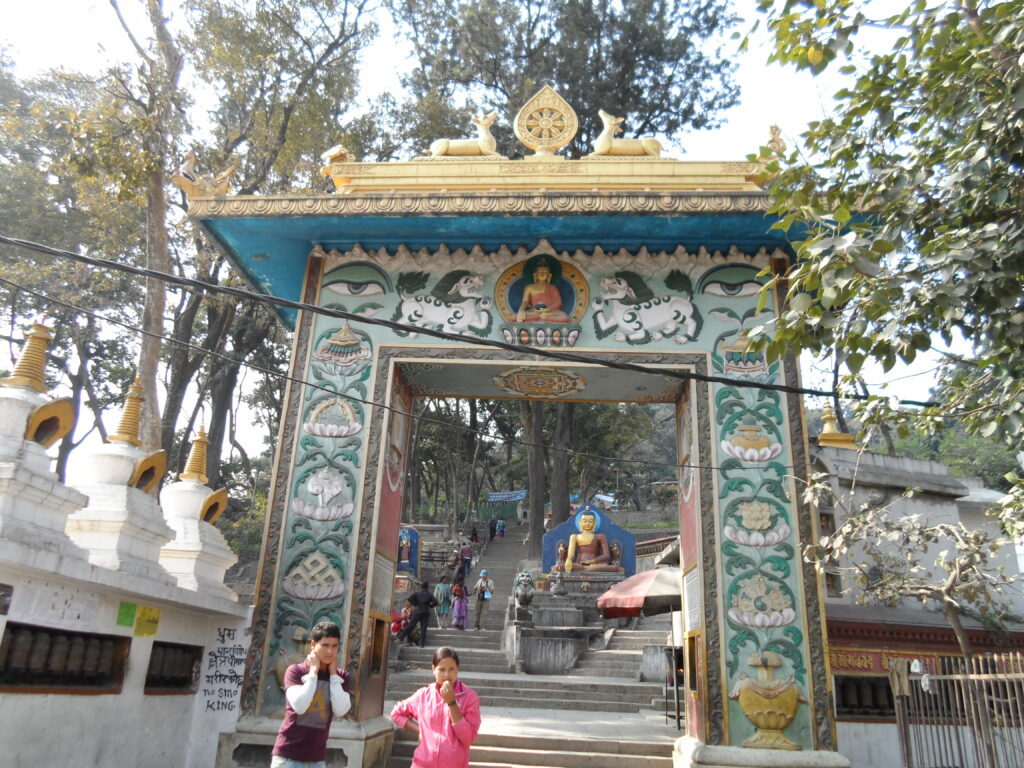
Marking the eastern entrance to Swayambhunath are beautifully designed gates. In addition to the gates, prayer wheels can be found lining the walkways and guiding you to the top. Mounted vertically on metal shafts, these wheels are intended to be pushed by hand or from the wind. The idea being that the users of the prayer wheels will move closer through repeated mantras to Buddhist enlightenment. Once through the entryway, concrete stairs begin their climb to the hilltop.
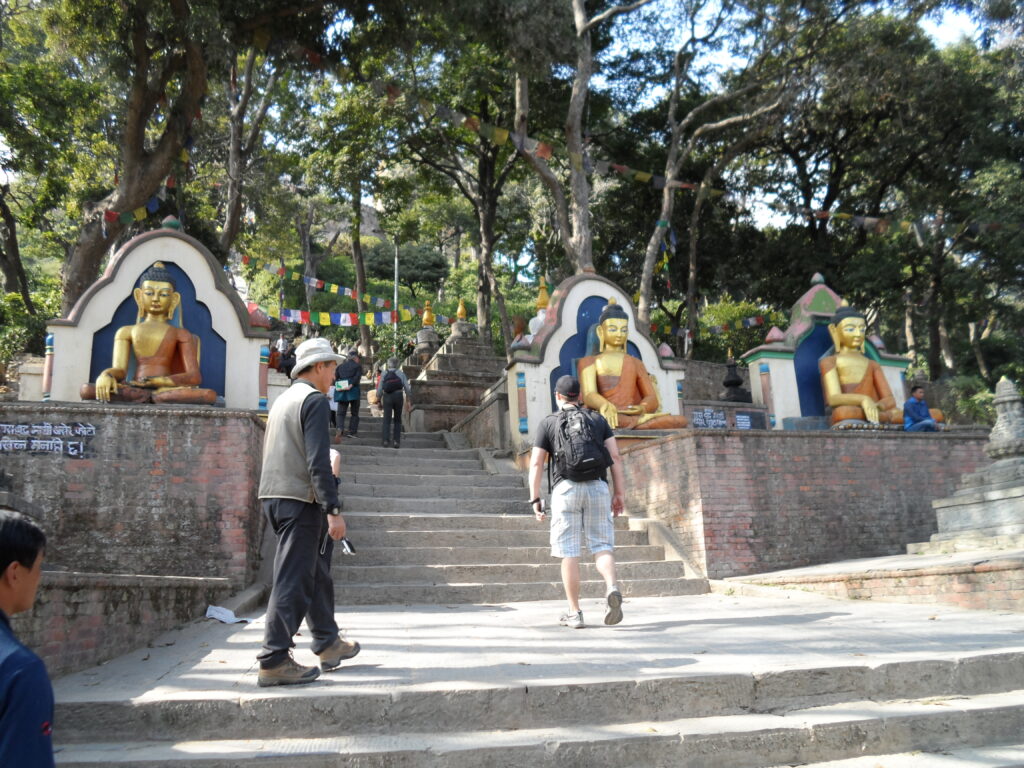
The climb itself is designed to be a religious process. Buddha idols mark the route and allow for visitors to take in a peaceful moment of reflection. Take your time along the way as you’ll find throngs of monkeys playing across the stairs. Sometimes referred to as the monkey temple, there is an ancient legend as to the origin of the animals.
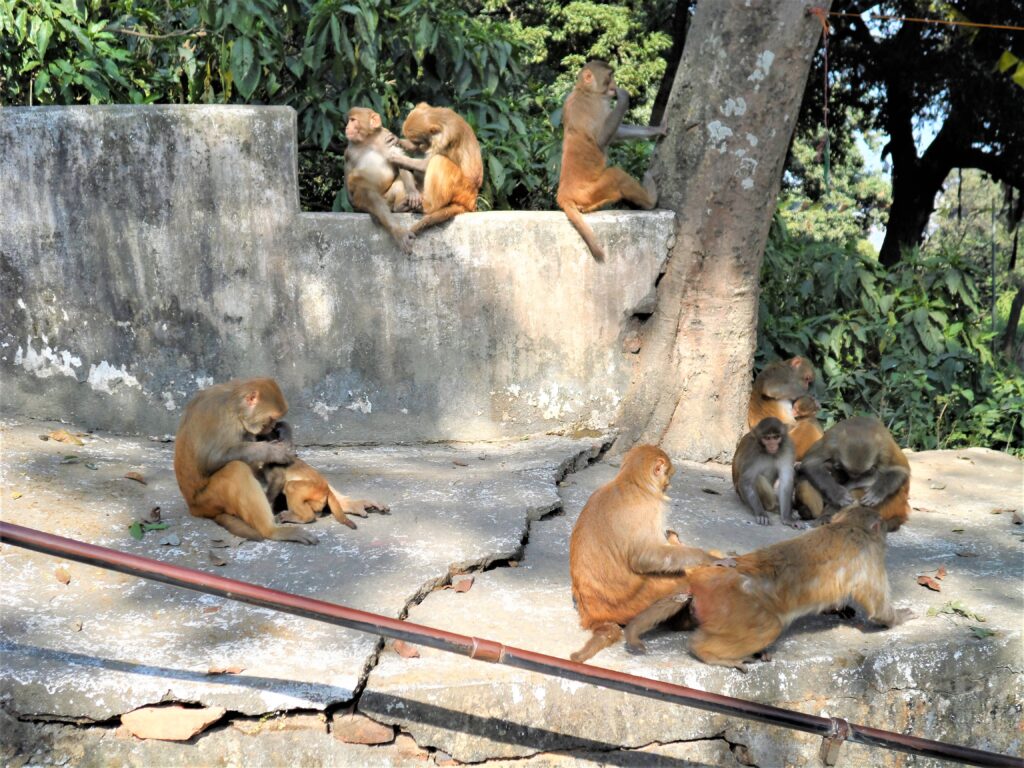
The story goes that Manjushri, a bodhisattva that is believed to be the oldest in literature, was creating the Kathmandu valley in his journey to enlightenment. As he built the hill that Swayambhunath stands on, he grew his hair out, and along with the hair, developed lice. The lice fell from his head onto the developing hillside and become the monkeys seen today. Take a moment to dig deeper into the history of Manjushri here as he is considered one of the key components to the religious development of Kathmandu.

Along with incredible views of Kathmandu valley, a gold and white colored stupa marks the top of the climb. The four-sided spire sports a pair of eyes on each side representing Buddha’s view across the entirety of the area. The scent of incense permeates the air and mixes with the smell of burning lamps. The whitewashed stupa looms large over the peak, the centerpiece to the site. Stupas in the Buddhist religion are rounded structures usually created to hold the remains of monks. In addition to this role, they provide followers a peaceful place for meditation or reflection.
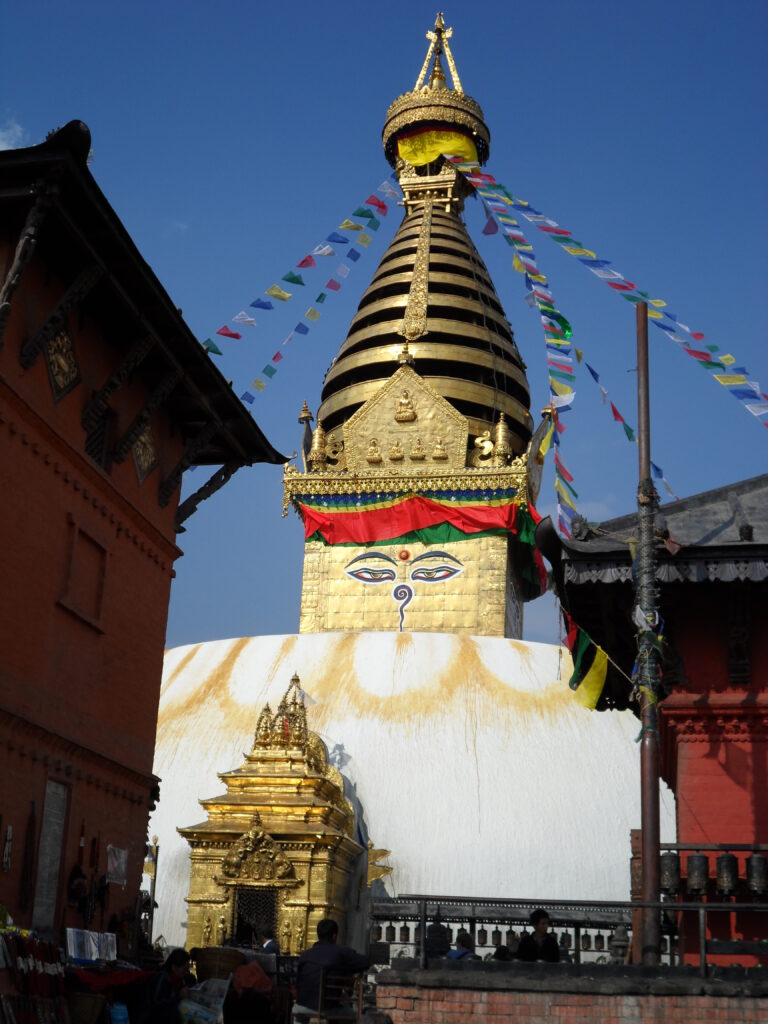
The Swayambhunath stupa represents wisdom. The rounded white base is a symbol for the world and the painted eyes on the golden rise represent the opening of the eyes to the wisdom of the world. Above the eyes, are thirteen pinnacles, each representing a step on the path to enlightenment. Look closely at the red marking above and between the large eyes, this represents the third eye. It’s through the third eye that buddha communicates with the heavens, his message calling to those beings deemed worthy and interested in his message. Surrounding the stupa are prayer wheels and Panch Buddhas, which act as Buddha in a metaphorical sense.
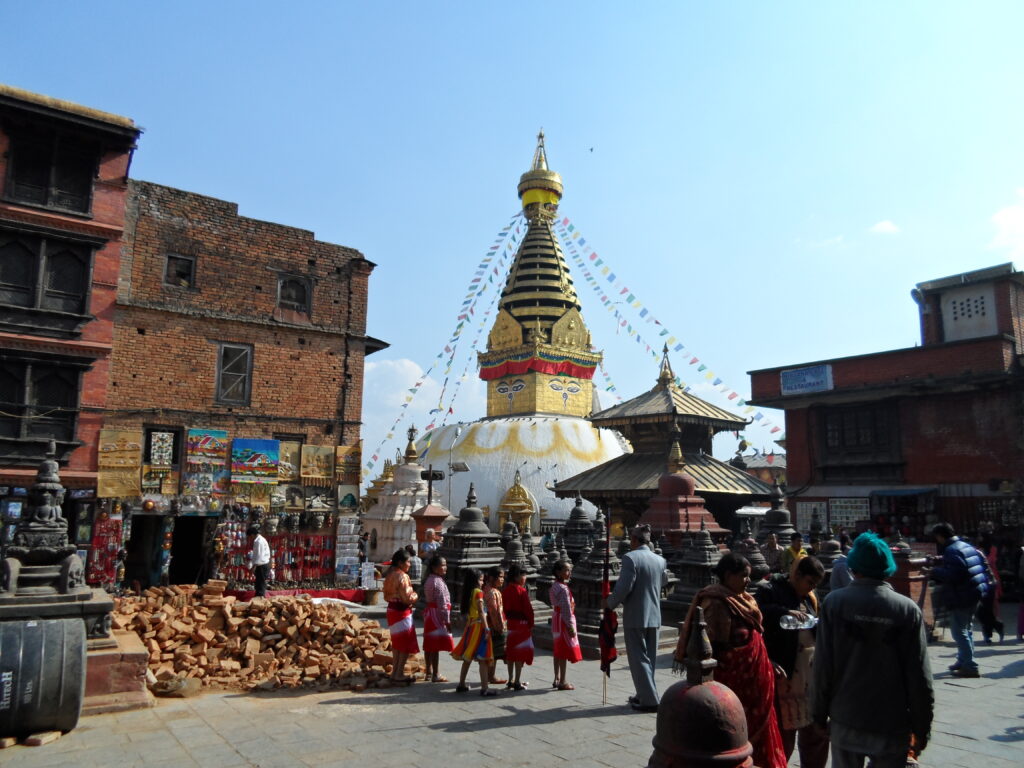
Originally built in the 5th century, the site has acted as a holy pilgrimage for both Buddhists and Hindus throughout its history. Most days at sunrise, many make the climb up the eastern stairs to the stupa and offer prayer. While primarily a religious complex, there are restaurants and shops that cover the hilltop.
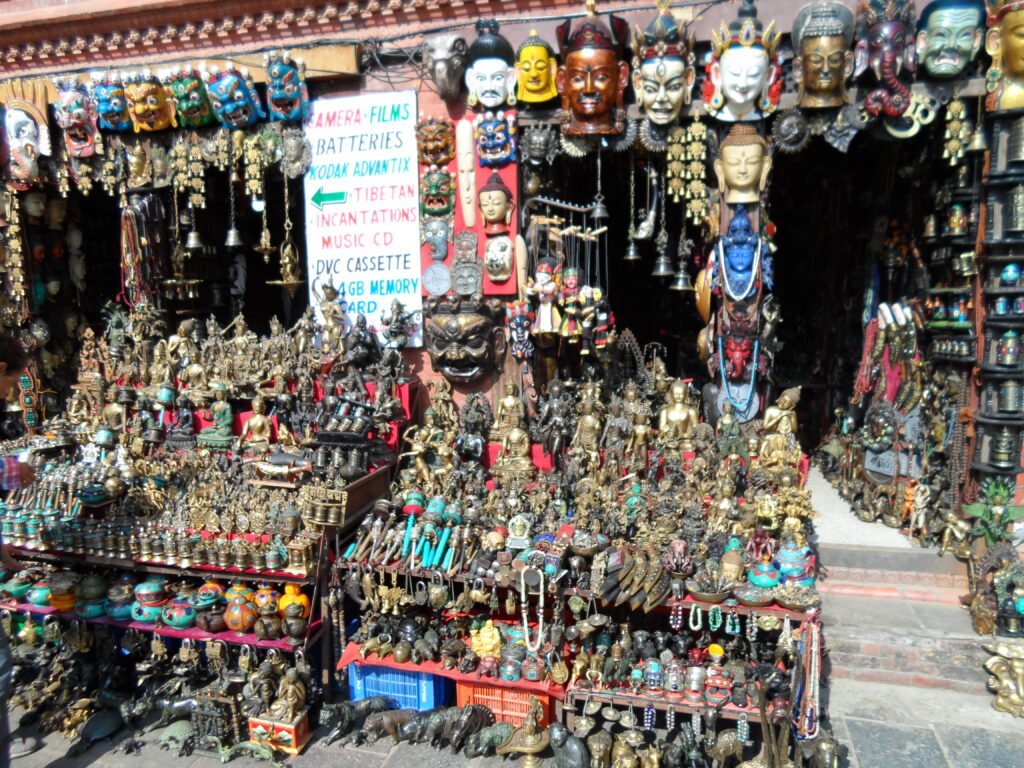
Stroll the hilltop to take in the religious trinkets for sale as well as the vistas of the valley floor. To the west, the green covered mountainsides rise creating a natural edge to Kathmandu.
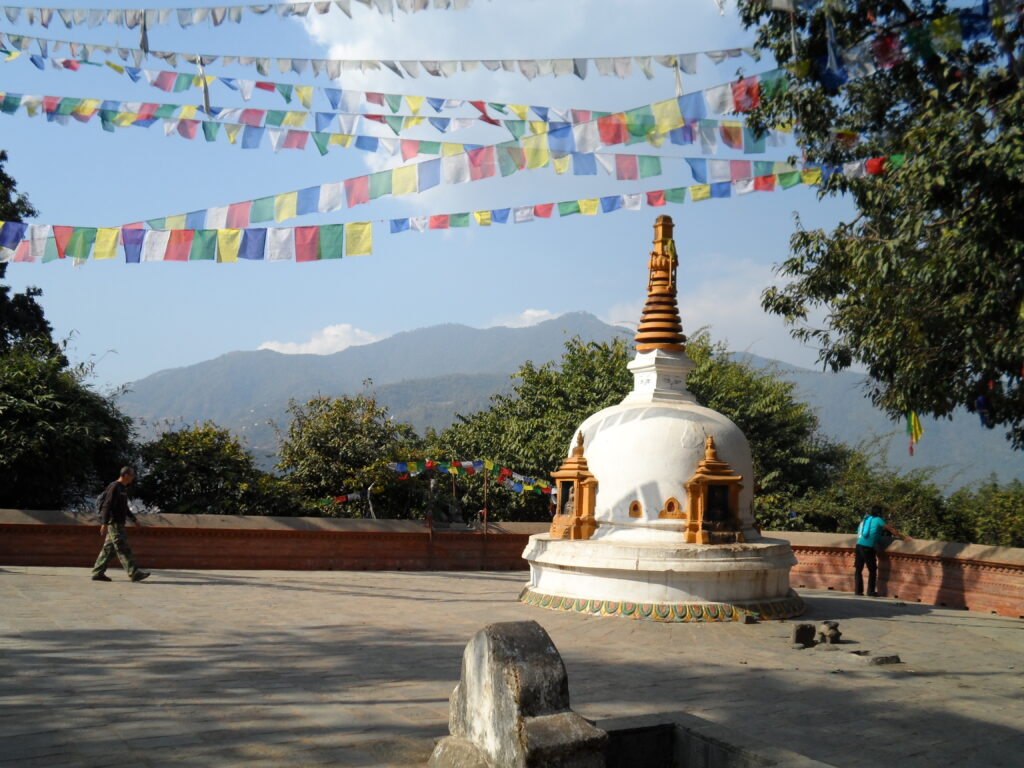
To the east, the sprawling metropolis fills the view. It’s not uncommon for the valley to be filled with haze, particularly in the fall. It’s a combination of farming the arid region and the lack of humidity during the dry season.
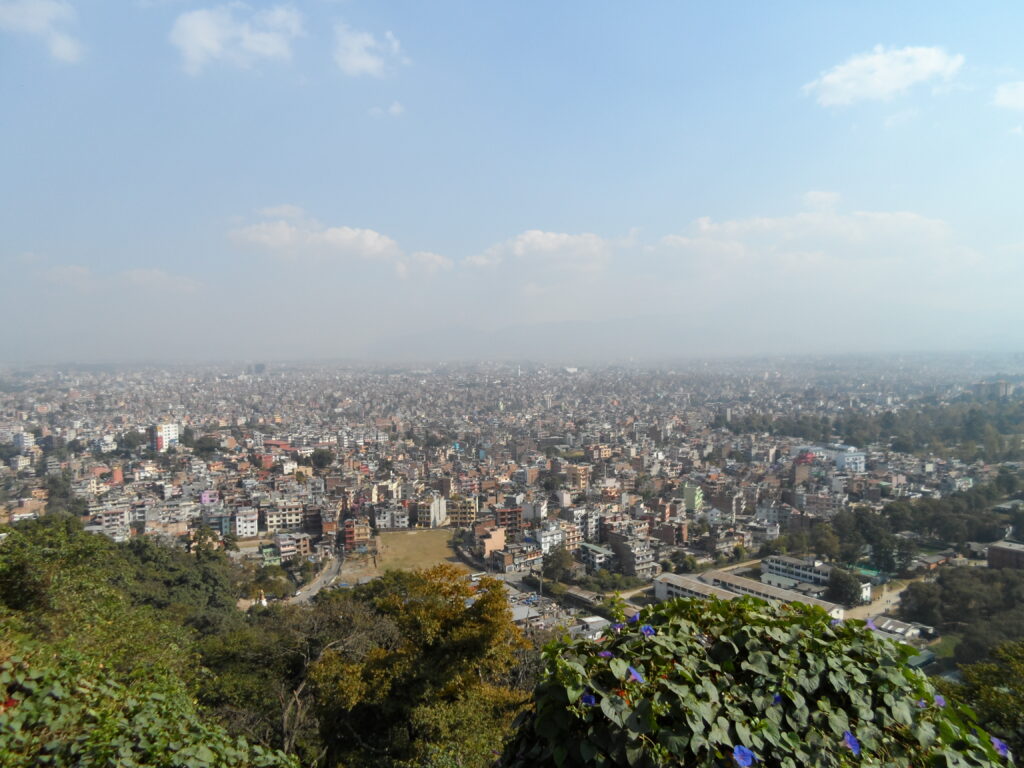
Back tracking the eastern route is considerably easier on the way back and offers a great view of the city during the descent.
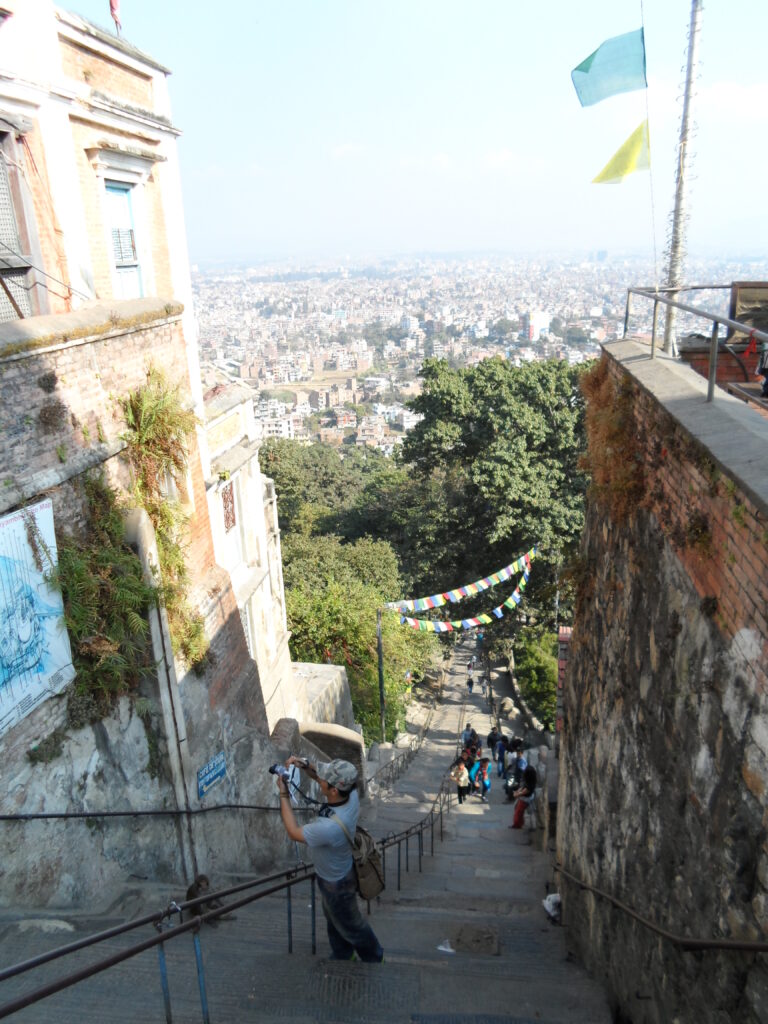
BOUDHNATH
Another must-see UNESCO heritage site is the famed Boudhnath stupa. This is where the blend of Nepali and Tibetan cultures come together. Standing in the northwest outskirts of Kathmandu, the Boudha stupa was built along a traditional Tibetan trade route and acted as a place of prayer and respite for travelers on the trail. The exact date of construction is debated, although most agree it likely dates back to the 4th or 5th century.
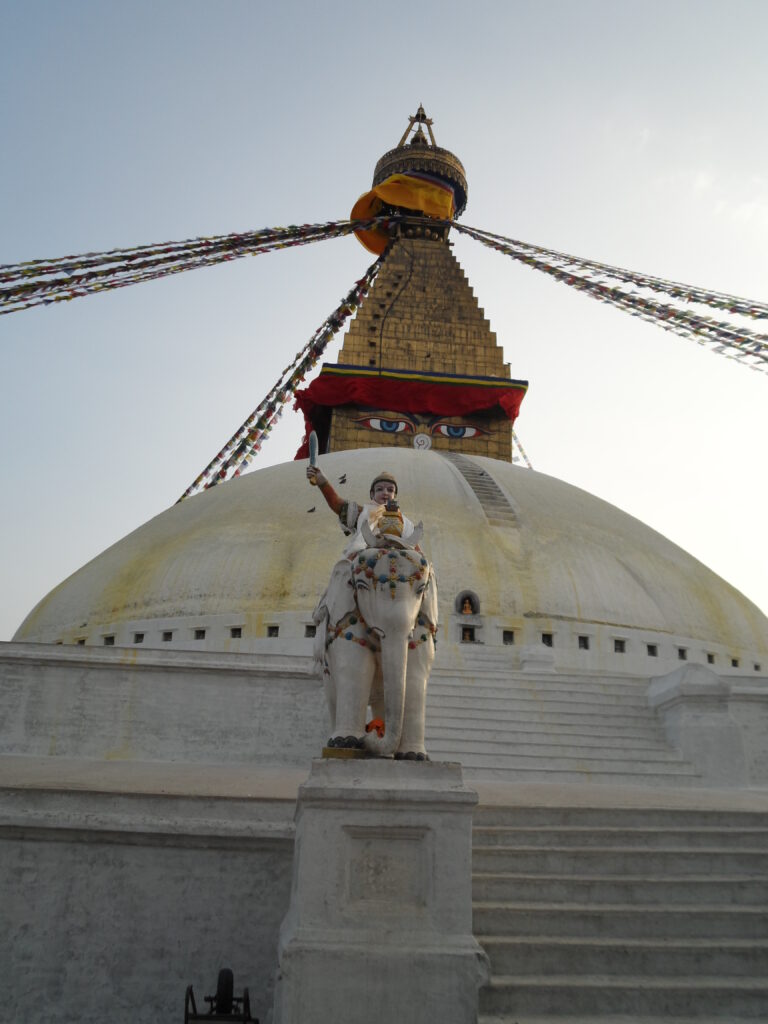
As one of the largest stupas in both Nepal and the world, it’s worth spending some time in the area. A surprise dash of metropolitan flare appears around the site in the form of rooftop Cafés and restaurants. It’s from these high perches that you can best see the full location.
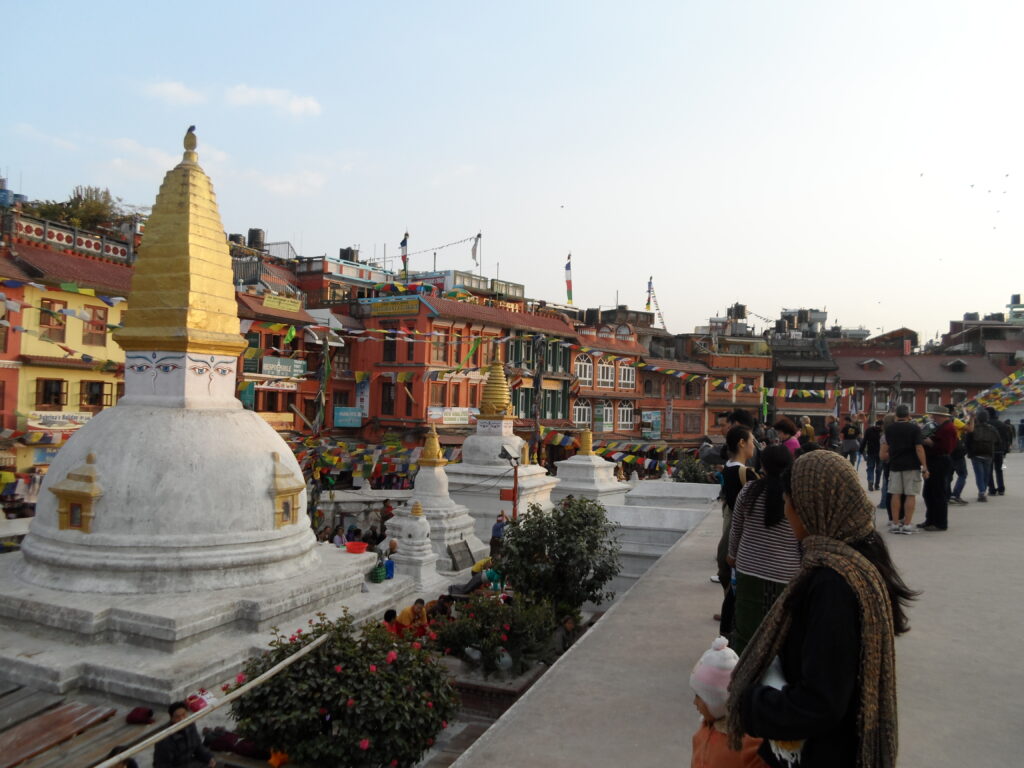
The white stupa sits on a tiered system of platforms, raising the already sizeable spire above the multi-story buildings surrounding it. This square tower represents the fire, while the dome on top signifies water. The plinth rising vertically above both of these characterizes the air and ends in an umbrella which is used to denote the ether or heaven. Around the outside are 108 images of the Dhyani Buddha named Amitabha. The Dhyani Buddhas are considered one of the five original or eternal buddhas in the religion. One other unique aspect to Boudha Stupa is the legend that a bone from Siddhartha Gautama, the original buddha, is kept securely inside.
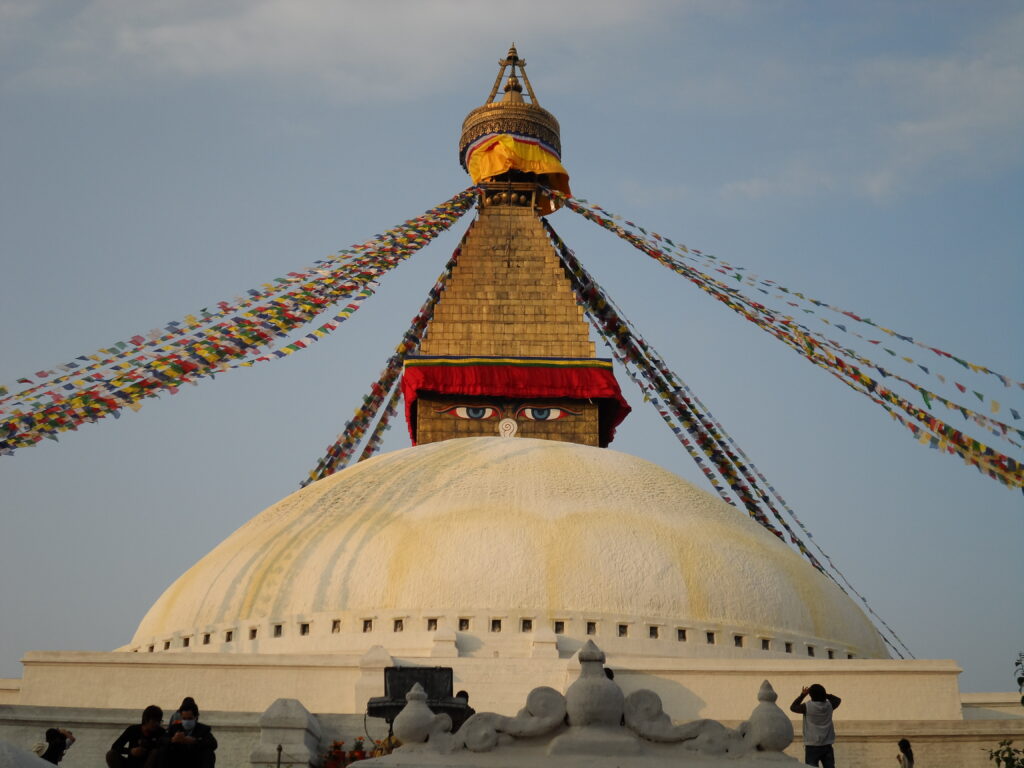
As mentioned in the last blog, the 2015 earthquake had significant impact on both of these UNESCO sites. The spire on the Boudha Stupa was severely damaged with a crack developing across it. Over the course of the following year the spire was removed and replaced. For a glimpse at what the stupa looked like without its top and/or to find out more information about the site, please click here.
Thanks for joining me in what is designed as the second of a three-part blog on the incredible nation of Nepal. Look for another update coming soon.
If you’re interested in must-see sites at some other Asian locales, travel to Bangkok here, and Singapore here. Join my mailing list here to stay updated on travel and aviation updates and look for my next article this must-see place.

Leave a Reply